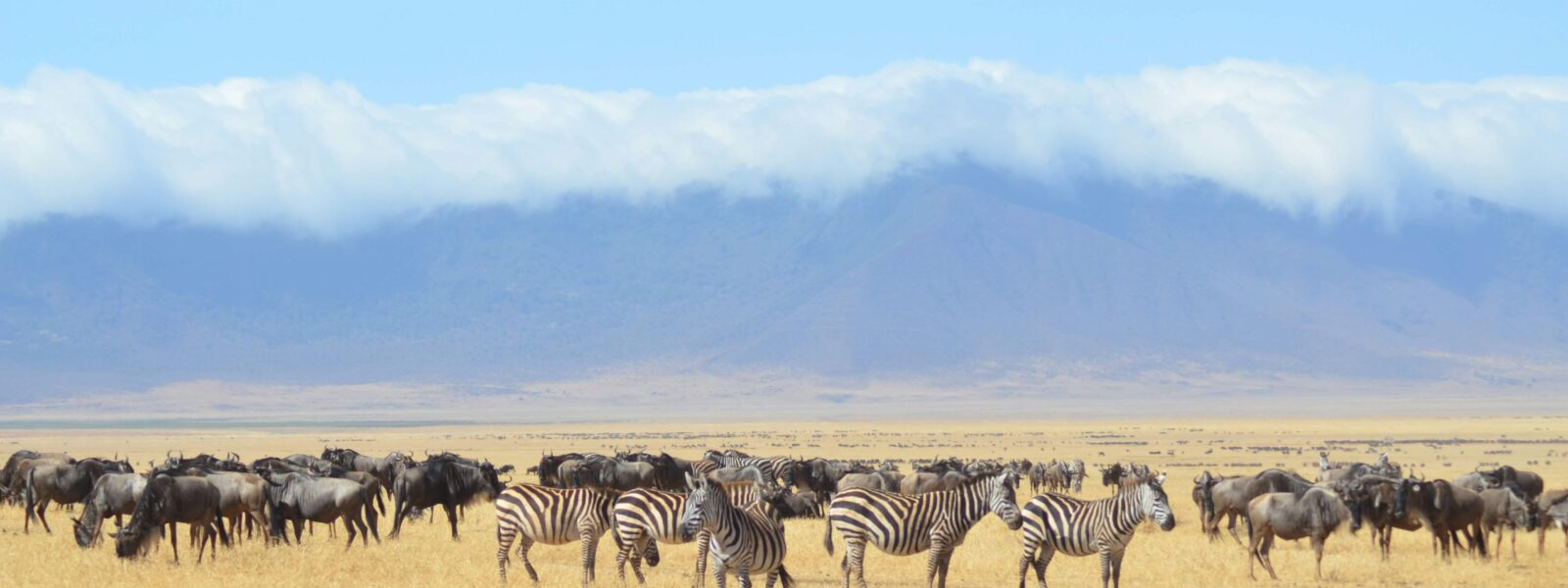The Wildebeest Migration is one of the most amazing wildlife events in the world. Every year, millions of wildebeests travel long distances to search for fresh grass and water. Learning important facts about migration helps, understand how wildebeest survive and why the migration journey is important.
Every part of the migration shows how nature works together. Knowing facts helps us appreciate the strength and struggle of the wildebeests. Below are interesting facts about the wildebeest migration.
The great migration involves a multi-species migration
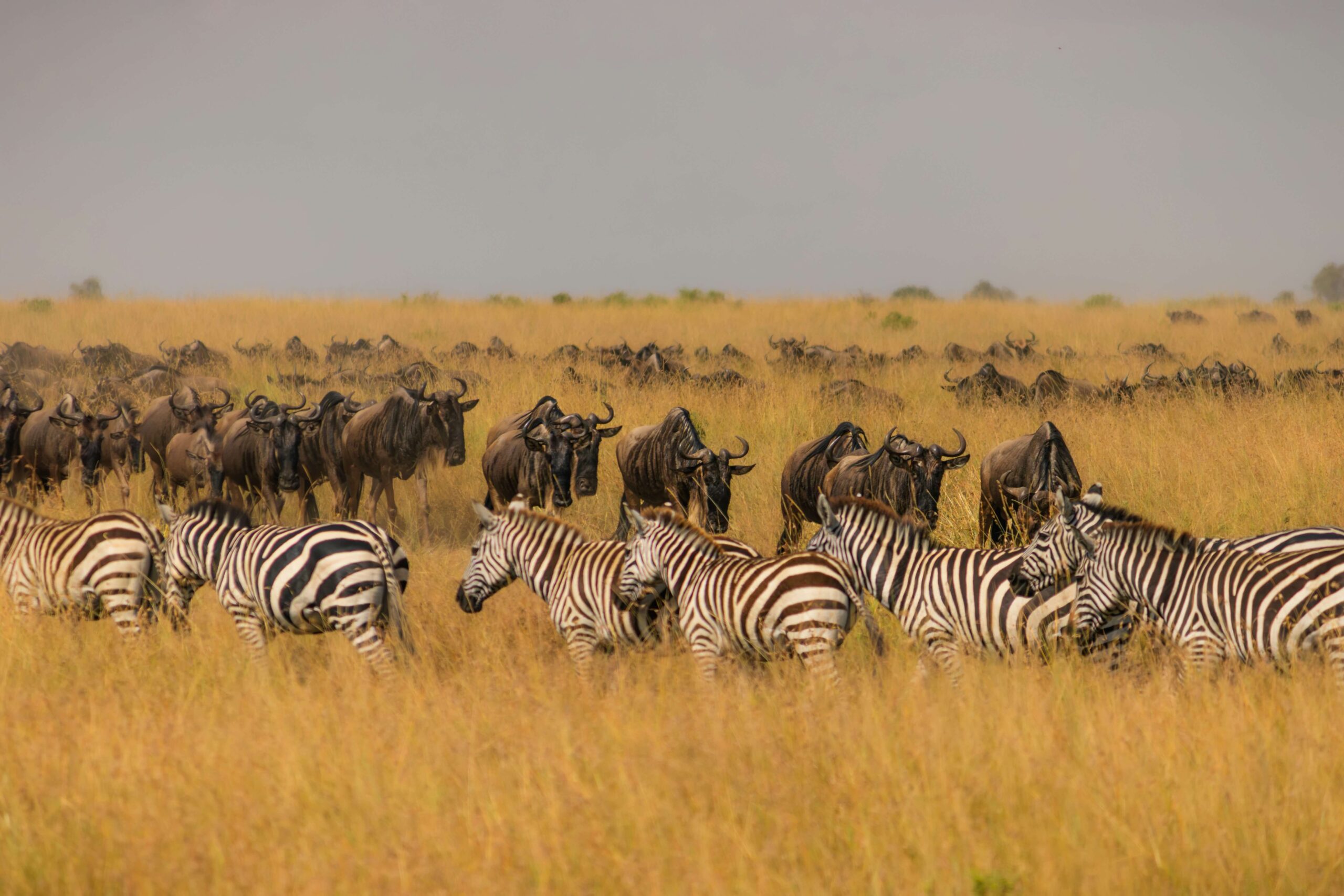
The Great Migration is not just the wildebeests that undertake the journey. Zebras and several kinds of antelopes like gazelles, elands and impalas travel together. They follow rain and fresh grass in large groups and helps them stay safe and find food. This shows how many animals depend on this journey to survive.
The Great Wildebeest Migration is a shared journey that supports many species. By moving together, animals increase their chances of survival and keep nature in balance.
Over 1.6 million animals participate in the Great Migration every year
Every year, nearly 1.6 to 2 million animals take part in the great migration, making one of the largest animal movements on Earth. Wildebeests are the main group with over one million wildebeest and hundreds of thousands of zebras, gazelles, elands and impala. Their large numbers help protect the herds from predators.
The massive number of animals in migration is the key to their survival. They create one of the most impressive and important wildlife events.
The Great Migration is a year-round event
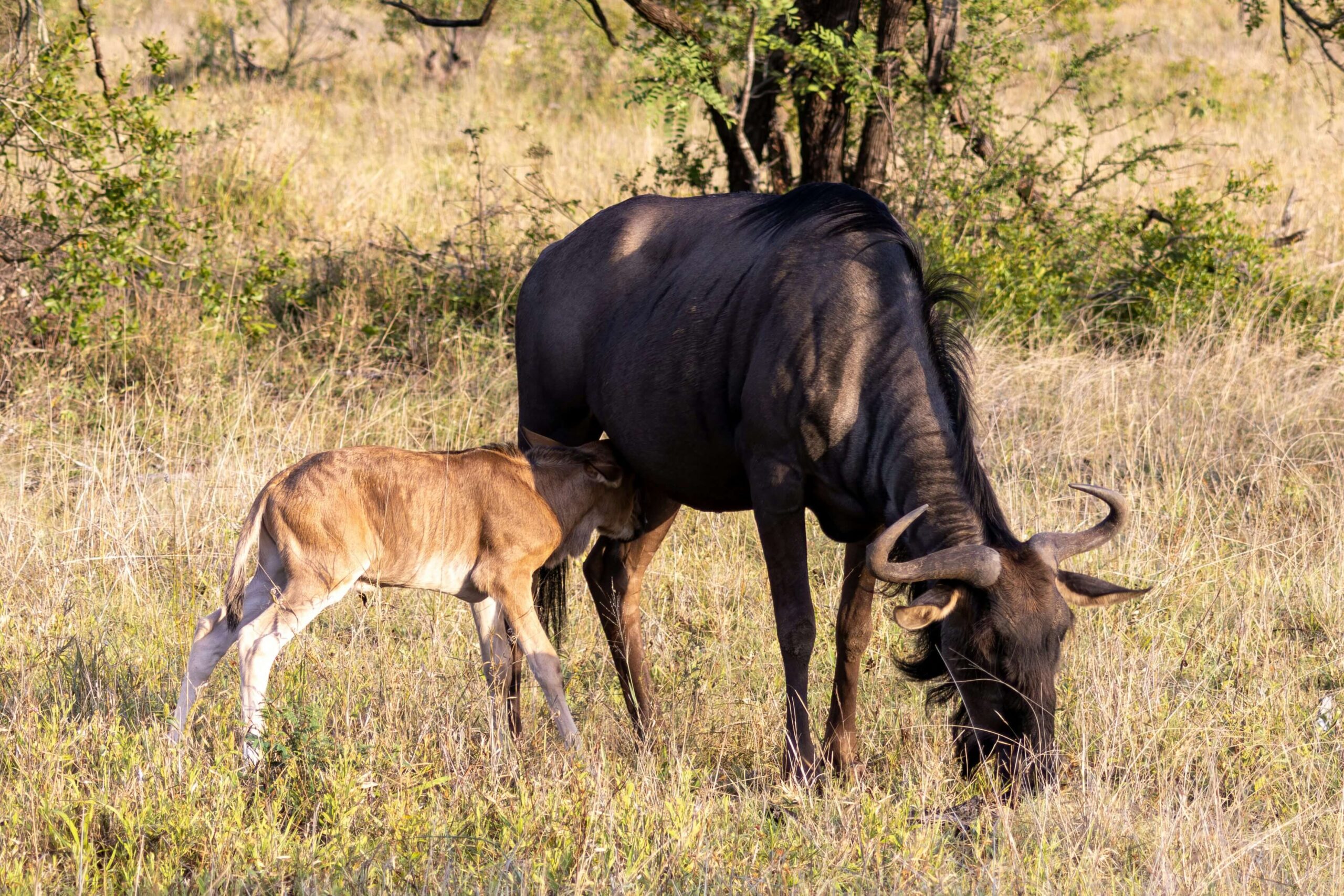 The mass movement of Wildebeests happens all year round. The river crossing is the most coveted event in the migration cycle; you witness migration all year round. The other major events in the migration cycle include birthing season and rutting season. The Wildebeests are constantly migrating across the Serengeti-Mara Region every year. Once the grass is depleted in one location, they move to the next, searching for water and new grazing fields.
The mass movement of Wildebeests happens all year round. The river crossing is the most coveted event in the migration cycle; you witness migration all year round. The other major events in the migration cycle include birthing season and rutting season. The Wildebeests are constantly migrating across the Serengeti-Mara Region every year. Once the grass is depleted in one location, they move to the next, searching for water and new grazing fields.
The Great Migration is more than a dramatic river crossing; it is a yearlong cycle of life. From birth to movement and survival, migration never ends.
One of the longest and largest terrestrial animal migrations in the world
Every year, over 1.6 million animals spend most of their year circling across Tanzania’s Serengeti and Kenya’s Masai Mara in search of greener pastures and water. The migrating herds cover over 600 miles during each cycle. The sheer number of animals involved also makes it one of the largest mass migrations of wildlife in the world.
The Great Migration is one of the biggest and longest animal journeys on land. It shows how strong and determined animals are as they travel far to find food and water each year.
The mega herds don’t always stick together
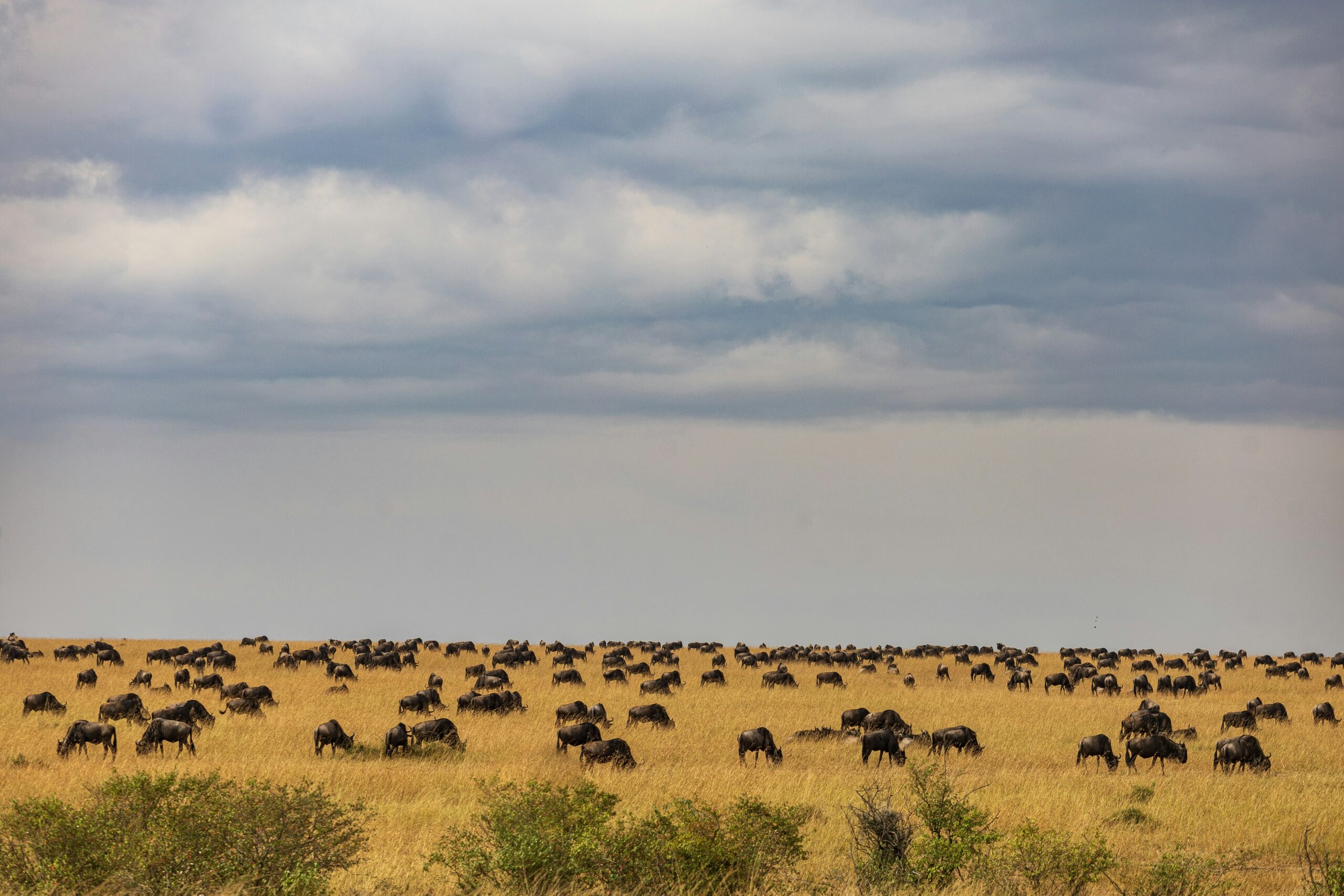
Nearly two million wildebeests and their companions take part in the Migration and rarely move as one massive herd. The animals break into smaller groups, each made up of tens of thousands, roaming slightly different paths across the wild plains. This strategy helps prevent overgrazing and keep grasslands. The herd comes together during the calving season in Southern Serengeti and Ngorongoro.
Splitting into smaller herds is a smart survival move in the wild. It helps great migration last year after year, ensuring the grass does not deplete and animals are strong as they move across vast African plains.
The Great Migration plays a great Role in maintaining the Serengeti-Mara ecosystem
The great migration, being a natural spectacle, plays a significant role in maintaining a healthy ecosystem. Their cyclic movement ensures enough nourishment, which is important for survival. This prevents overgrazing and maintains a healthy population of Wildebeests. In return, this gives predators enough food to sustain them. This creates a healthy predator-prey balance, which is essential. Grazer’s droppings nourish the soil, giving rise to new grass and plants supporting all other herbivores in the wild.
The wildebeest migration is a key part of life in the Serengeti and Mara. It helps keep grasslands healthy, supports many animals and keeps nature in balance.
Zebras and wildebeests are naturally great friends
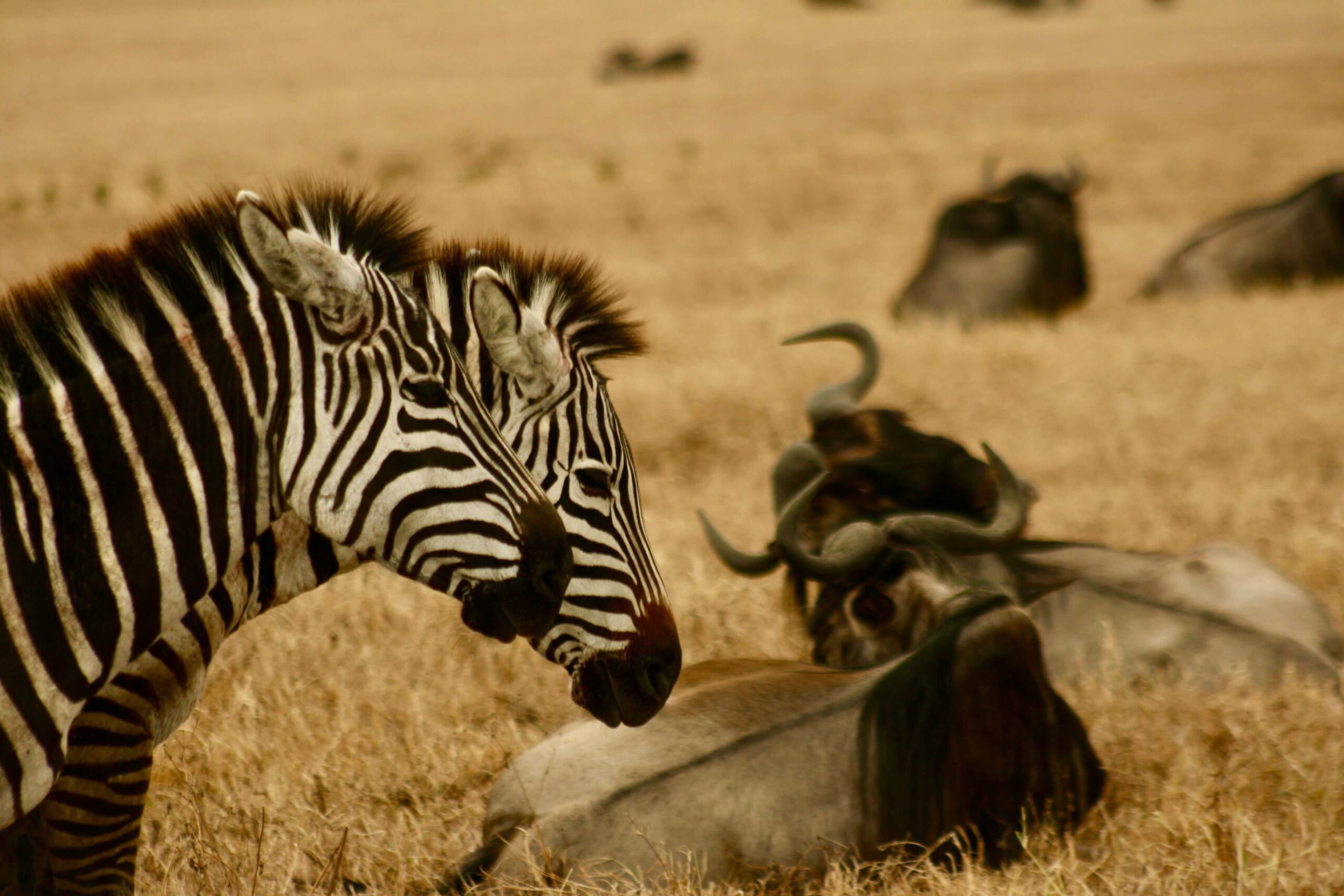 Zebras and wildebeests are natural friends. They live peacefully together as they travel across the African plains. They have a special relationship that helps both survive in the wild. Both eat grass, but do not compete; they eat different parts of plants. Zebras long tough grass, leaving shorter grass to wildebeests. Zebras have good eyesight to help see predators, thus helping the herd stay safe. Wildebeest’s strong sense of smell helps them find water.
Zebras and wildebeests are natural friends. They live peacefully together as they travel across the African plains. They have a special relationship that helps both survive in the wild. Both eat grass, but do not compete; they eat different parts of plants. Zebras long tough grass, leaving shorter grass to wildebeests. Zebras have good eyesight to help see predators, thus helping the herd stay safe. Wildebeest’s strong sense of smell helps them find water.
Zebras and wildebeests work together in nature, helping each other to survive. Their different skills and habits make their friendship strong and help them stay safe during migration.
Approximately 280,000 animals die during the annual migration
About 280,000 animals die every year during the wildebeest migration. This includes more than 240,000 wildebeests and 40,000 zebras, gazelles and impalas. They die because of predators, tiredness, hunger and drowning.
The Great Migration is very dangerous, as many animals do not survive. This struggle is part of nature’s way of keeping the ecosystem balanced.
Two-thirds of the great wildebeest migration actually happens in Tanzania
Two-thirds of migration actually happens in Tanzania. The river crossing to and from Maasai Mara Reserve from August to October is the most famous part, wildebeests spend nine months grazing and moving through Tanzania and only 2 to 3 months in Kenya. Migration happens most in Serengeti National Park, Loliondo Game Controlled Area, Ngorongoro Conservation Area and Grumeti Reserve.
Most of the Great Migration happens in Tanzania, where wildebeests spend most of their time moving and feeding before crossing into Kenya for a short period.
There is not a single distinct leader in the herd
Wildebeest movement is not decided by one wildebeest but by the whole group working together. This herd behavior, the tens of thousands of wildebeests move together in the same direction and at the same speed. Group intelligence helps during dangers, avoids predators and finds better places.
Wildebeests rely on their strong herd instinct to stay safe and survive. Moving together helps them find food and avoid danger better than going alone.
Exploring facts about the wildebeest migration, this event is fascinating to watch. It reveals the careful and complex strategies these animals use to survive and thrive. All these actions play a crucial role in making the migration an incredible spectacle. The wildebeest migration stands as one of the most amazing natural events on Earth. This yearly journey shows the power of cooperation in nature and remains one of the world’s greatest wildlife wonders.

